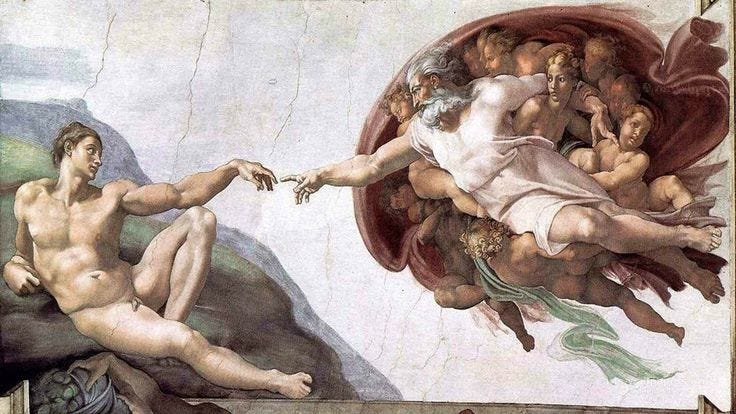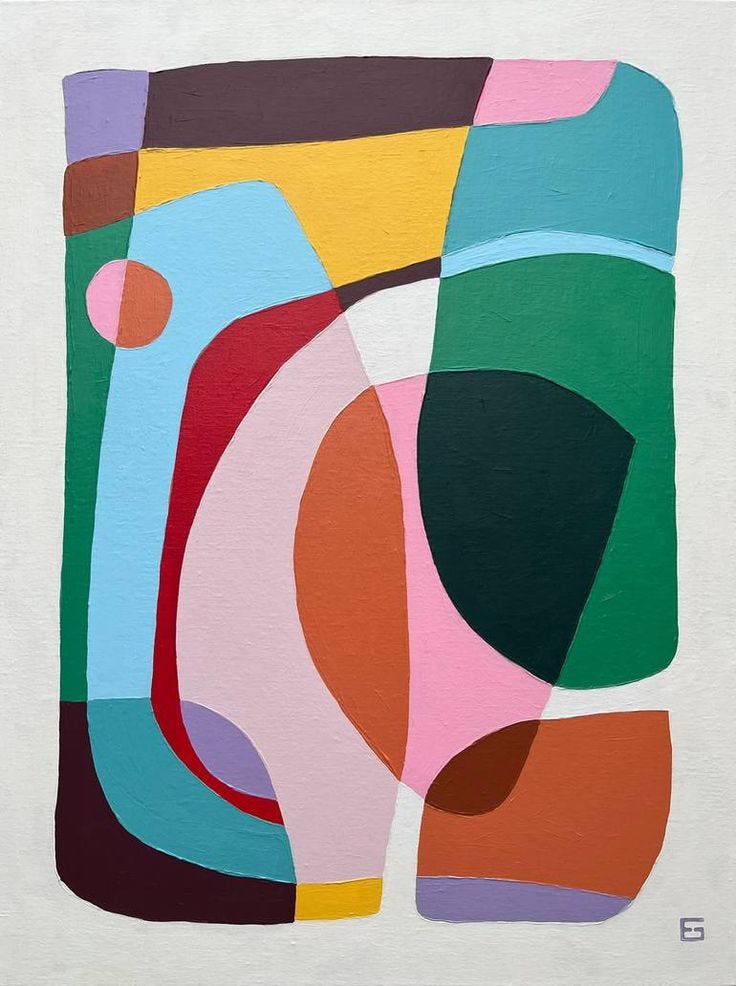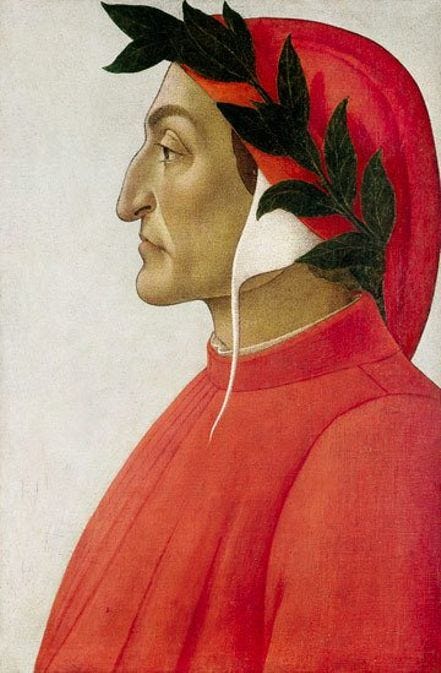Welcome to today’s edition of That’s A Good Idea. If this is your first time reading, subscribe here.
One quick thing:
If there is a recent essay or edition that has sparked your curiosity, given you a new idea, or in any way contributed positively to your daily life please consider supporting That’s A Good Idea with a $5 monthly subscription. I want, more than anything for TAGI to remain something you look forward to reading each week and your support helps me to gauge if I am on the right track. While I don’t write to make money, any small contribution is greatly appreciated. Additionally, if there is a specific topic, idea, or book you’ve read recently that you’d recommend me digging into, let me know in the comments below!
The Case For A Right-Wing Art Movement
I recently saw a clip of conservative commentator, and notable five-head, Charlie Kirk, saying that finds no value in reading fiction.
My first thought: Another perfect example of why normie conservatives are getting steamrolled in the culture war.
In the last four years, we’ve all seen the fever pitch of the political rhetoric increasing. The United States is not well. And everything from children’s television shows to horse medication (if you know you know) has become a battleground in the “war for America’s future”.
The front in this conflict we’re most familiar with is in the media.
This, of course, makes perfect sense. The average American spends approximately 3.2 hours watching Netflix per day. The media we consume shapes our opinions and cultural identity more than any political candidate, conversation with family, or college course. We may not realize it, but it’s true. It’s quite. subliminal.
Art and media are a reflection of our society. Good art, objectively speaking, gives us a transcendent window into the beauty and truth of our existence.
When you walk around a city, you’ll notice the exquisite detail in the craftsmanship of old buildings. They have a character to them. A beauty for beauty’s sake. They’re made of brick, stone, earth. Tangible and real materials that stand in sharp contrast to the austere glass and chemically engineered steel and metal of modern skyscrapers.
This same feeling — this same nostalgia — fills me when I watch old movies, read old books, or listen to old music or study old art. I’m certain it’s not a simplified romanticizing but a recognition of something real. It feels real. It feels like people just cared more.
Almost everyone I talk to shares the same feeling. We crave the feeling of “real art”. But it seems harder to find than ever.
While the war of ideology, and the increase in mass market commodification of art, intensifies, beauty suffers.
The progressive left has cemented itself in the institutions, controlling and steering the national art and media landscape without challenge. We all used to love Snow White and the Seven Dwarfs as children. Well how about the new Snow White and the Seven Diverse Cast Members Of Ugly Weirdos!
We all love Martin Luther King Jr! He’s a civil rights icon, an American hero! Let’s commemorate him with a $10 million dollar bronze “statue” that looks like a log of feces.
I could provide example after example.
The left has perverted art into an act of “class consciousness”. The relationship with beauty, truth, and divinity of nature and God is severed in contemporary art and media. What it’s been replaced by is a subtext of social justice. And the right have let them get away with it. For the left, there is a clear ideological goal behind the act of artistic creation, and they have seized control of media and artistic institutions that allow them to enact these goals.
Conservatives on the other hand, have been unable to articulate or appreciate the transcendent role that art plays in shaping culture. Quite often, they point to religious motifs and the “classics” as examples of quality art.
But they fail to recognize that art, transgressive art in particular, is a reflection of its time. They would rather opine about the cultural decay of America, instead of grabbing the culture by the throat and changing it through courageous expression, and an increase in funding for our artistic institutions.
While the left creates, conservatives look at our modern, godless, fragmented, and neurotic society, and pray for a rebirth of high-renaissance religious imagery. It is stupidly childish.
To the young people who have been educated and indoctrinated towards an understanding of the “social justice responsibility”, of art, the conservative message is seen as moralistic and archaic.
The young creative wants to change the world, and naively sees art as the vehicle for destroying “systems of oppression”. It’s what they’ve been told, and it becomes the overlayed theme of all their future work.
Beauty, spirit, vitality — concepts that can be revealed directly in the work, become clouded by an overwhelming political subtext. And because conservatives have no direct interest in public arts education we will continue to see dogshit “contemporary art” hanging on museum walls. We will continue to be fed stories of diverse gay characters fighting the evil white man.
In order to light the fire of a vitalist, avant-garde, art movement, conservatives need to have a vision of the future that is attractive, polarizing, and transcendently beautiful. They must have the courage to create, and fund art that demonstrates the power and beauty of the human spirit.
Conservatives would be wise to study the Vorticist and Futurist art movements born in early 20th century Italy. Movements that became synonymous with the power and grandeur of the human spirit and its capacity for strength and power.
As Filippo Tommaso Marinetti said in the Futurist Manifesto:
“The essential elements of our poetry will be courage, audacity and revolt.”
For a conservatives to establish an aesthetic identity, they need to pull their attention away from immigration data and deficit charts, and build something aspirational.
Art is for the people, and the people are begging for real storytelling, real beauty, and real expression.
Conservative Psychology
The Right’s attitude towards artistic expression, is in part, no fault of their own. The Big 5 model of personality assessment — the most widely used personality model in the world — has consistently found that Conservatives, in general, are lower in trait openness, and higher in trait conscientiousness.
Openness predicts an individuals desire for new aesthetic experiences. It is a trait highly correlated to creativity. Open individuals tend to be less judgmental of expression, and seek out novel, new experiences.
Conscientiousness predicts and individuals predisposition to maintain order and clarity in their actions. Conscientious individuals generally have a lower disgust tolerance. They like things clean, organized, and they embody these preferences in their actions and interests.
Naturally, these psychological and genetic predispositions make the arts less attractive than professions and interests that establish order.
Business
Law Enforcement
Tradework
There are, of course, exceptions to this rule.
Renaissance masters like Michelangelo, Donatello, and Dante all shared a “conservative”, religious worldview and sense of moral purpose. Salvador Dali was a proud Monarchist and supporter of Franco. These men saw art as a way to undergird the moral and political foundation of the nation and its people. It was a distinct type of veneration that allowed them to remind the populace what lay beneath the politics and struggle of their state at the time. They weren’t directly supporting the state as mere puppets, they were reminding the state of its sovereign and divine master, that they too often forgot.
The late Roger Scruton, an English conservative philosopher and writer, was perhaps the most notable defender of the arts and arts education in the 20th century.
“Beauty is vanishing from our world because we live as though it did not matter.”
But in the modern era, conservative proponents of the arts like Scruton are rare.
And because of the average conservatives natural temperament, their “strategy” to pushback on modern art and culture takes on a whining, puritan, and defensive tone.
Conservative Billionaires don’t want to fund the arts. They would rather fund political action committees or debate immigration policy and the deficit. This is a 21st century phenomenon.
In the 19th and 20th centuries, the Gilded Age Robber Barrons, commissioned massive public arts projects. The Vanderbilts and Rockafeller’s, for all their flaws, took arts and art education seriously, seeing it as part of our collective cultural responsibility to create and support beauty.
The location of the 1934 Chicago Worlds Fair, one of the most extravagant and inspiring events in American artistic and technological history, was selected after a national funding war between wealthy New York and Chicago businessmen. For them, there was a gravitas — a sense of moral duty — in planning and executing such an event. And the end result was an aspirational celebration of beauty and human achievement.
Due to the progressive lefts current stranglehold on the arts, celebrating human achievement, power, and dynamism has been inverted to a mockery of beauty. Disney has lost billions, the publishing industry has continued to consolidate, and modern art museums get only a steady trickle of the “intelligentsia” who have the class consciousness to be able to understand the “true” meaning of the big red circle they hang on the wall and call “art”.
People are hungry for something else.
We don’t want statist propaganda, we want to see our energy and spirit reflected in creation. If the right can help bring that into the world, they have a moral duty to do so.
As always, thanks for reading.
-Joe












I don't like to be labeled as right or left. I'll be voting Kennedy for example.
I believe my artwork to portray truth. That's all u can do or that is important to me.
Once again, you hit the nail in the head brother. I’ve been saying this as well. Conservatives are obsessed with “facts and logic” and forget the way to people’s hearts is through art, poetry and beauty. That’s how you influence someone. Not by citing crime statistics.
I actually wrote an article about this too some weeks ago, if you want to check it out! https://open.substack.com/pub/simplemen/p/how-to-actually-win-people-over-to